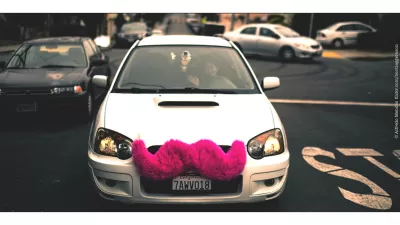After Seattle Citizens to Repeal Ordinance 124441 acquired twice the necessary number of signatures necessary to send a March ordinance capping the number of Uber, Lyft, and Sidecar drivers in the city, the mayor will negotiate with the companies.
“A coalition group has collected enough signatures to suspend a newly-passed ordinance regulating companies like UberX and Lyft, and now Mayor Ed Murray wants to work with all stakeholders to reach a new agreement,” reports Taylor Soper. The decision effectively puts the operation of transportation network companies back to square one, as if March legislation passed by the City Council in March to cap the number of drivers allowed to operate in the city at any given time never happened.
Seattle Mayor Muray has announced that the city and the companies will enter a 45-day negotiation process. Reports Soper: “If a compromise is reached during the negotiation process, the City Council could repeal the ordinance and then work together on a new set of regulations. If that happens, the referendum [as required by the signatures] would not appear on a ballot later this year.”
FULL STORY: Seattle ride-sharing regulations suspended; Mayor wants to negotiate with stakeholders

Trump Administration Could Effectively End Housing Voucher Program
Federal officials are eyeing major cuts to the Section 8 program that helps millions of low-income households pay rent.

Planetizen Federal Action Tracker
A weekly monitor of how Trump’s orders and actions are impacting planners and planning in America.

The 120 Year Old Tiny Home Villages That Sheltered San Francisco’s Earthquake Refugees
More than a century ago, San Francisco mobilized to house thousands of residents displaced by the 1906 earthquake. Could their strategy offer a model for the present?

HSR Reaches Key Settlement in Northern California City
The state’s high-speed rail authority reached an agreement with Millbrae, a key city on the train’s proposed route to San Francisco.

Washington State Legislature Passes Parking Reform Bill
A bill that would limit parking requirements for new developments is headed to the governor’s desk.

Missouri Law Would Ban Protections for Housing Voucher Users
A state law seeks to overturn source-of-income discrimination bans passed by several Missouri cities.
Urban Design for Planners 1: Software Tools
This six-course series explores essential urban design concepts using open source software and equips planners with the tools they need to participate fully in the urban design process.
Planning for Universal Design
Learn the tools for implementing Universal Design in planning regulations.
Ada County Highway District
Clanton & Associates, Inc.
Jessamine County Fiscal Court
Institute for Housing and Urban Development Studies (IHS)
City of Grandview
Harvard GSD Executive Education
Toledo-Lucas County Plan Commissions
Salt Lake City
NYU Wagner Graduate School of Public Service



























